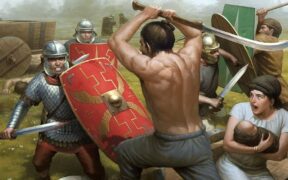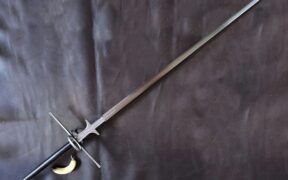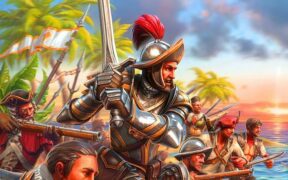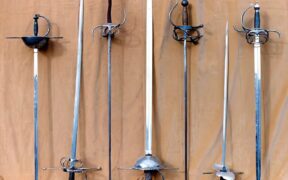Falcata Sword: The Iberian Sword that Terrified the Romans
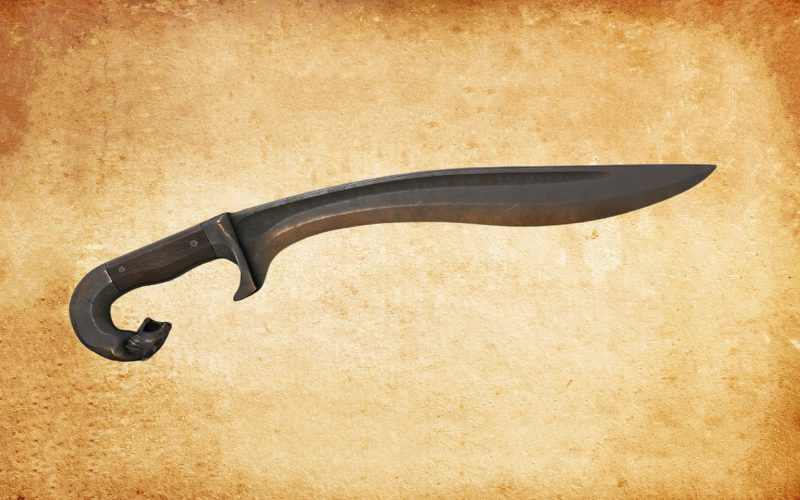
The Falcata was an ancient sword that was used often in Iberia, modern Spain, before the Roman conquest. It has a slightly curved, short, and heavy blade which terrified the Romans.
In this article, we will be going in-depth about the Falcata Sword. You will discover its most visible and authentic characteristics and how they were best used. You will find out it if is still being used today and what its history is. Then we will finish up by covering its origins and comparing it to the Kukri and Kopis.
Characteristics of the Falcata
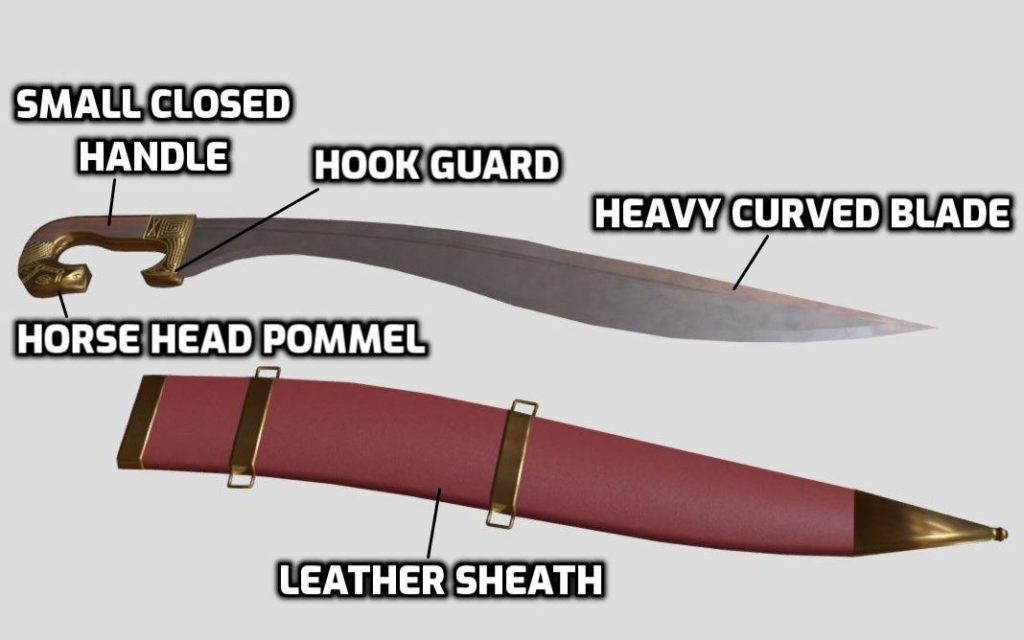
The Falcata sword has distinct ancient sword characteristics. Even so, it does manage to look very unique mostly because of its curved heavy blade and hooked pommel.
Blade
The blade of the Falcata can be made from iron but from steel or carbon steel alike. It is curved, forward-swept, double-edged, and not very long. It starts out from the guard wider, then gets slimmer, and finishes wider at the very tip too. This curving blade was the reason why it was so successful in battles.
The total blade length of the Iberian Falcata is 20 inches (50cm) long. It isn’t a very long blade but it can pack a punch mainly because of its shape. Because of how short it is, it is primarily used as a close combat weapon.
Guard
The Falcata sword doesn’t really have a guard at all. It is a small piece of metal that spans from one side of the blade to the other. It usually has a little hook to be able to provide a better grip on the handle.
Handle
The handle length for the Falcata sword is around 3.5 inches / 9 cm long. The handle of the Falcata is very distinct and unique. For an ancient sword, it looks very interesting on its own.
It is curved and made so that the hand and the fingers will be perfectly placed in their appropriate locations. The handle usually has a curved protector or the horse head from the pommel and a small extension coming from the guard.
This gives the Falcata user a very strong grip when held in one hand. The slashing power was substantial for this sword mainly because of the handle.
Pommel
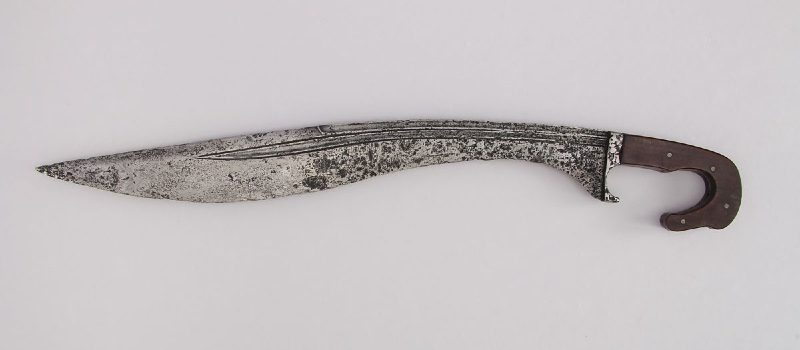
The most unique feature of the Falcata sword is its pommel. It is shaped to look like a hook. Sometimes it is a head of a horse, sometimes a bird. It doesn’t have a pommel like the other swords per se, but it still is the beginning of the sword that helps a lot for having a stronger grip.
It offers protection to the user’s hand and offers extra momentum when striking. Also, it helps out to secure the hand of the wielder and protect it from attacks.
Scabbard
The scabbard for the Falcata can be made of wood, but it was most often sheathed in leather material. It is the same size as the blade and is usually placed on belts. It is a short sword so the leather sheath will allow for faster unsheathing.
Shape
The Falcata has a single or double-edged blade that tapers toward the point. The edge is concave at the bottom and curved at the top. Because of how the weight is distributed, the Falcata can deliver a blow with the speed of an axe while keeping the sharp and cutting edge of a sword.
Most of the time, the pommel is shaped like a hook, and the end is often made to look like a horse or a bird. Usually, a thin chain goes from the tip of the hilt to the top part. Even though it was a single-edged sword, people have found falcatas with two edges.
Length & Size
The overall length of the Falcata sword is around 60cm / 24.5 inches. That is why the Falcata is placed in the shortsword group. It is a pretty average-sized weapon for the ancient world. It is the perfect size for using a shield in the other hand.
It starts out wider at the neck of the sword and as it goes toward the end of the blade it gets slimmer. Then at the end, it broadens. This way it will prove to make very deadly slashes and the blade would not get stuck on impact. It is 2.6 inches / 6.6 cm wide.
The point of balance is somewhere around 4.2 inches / 10 cm from the guard.
Weight
The Falcata Sword is 1.3 kg / 2.8 lbs heavy. Even though it is a very short sword, the thickness and the shape of the blade make this a heavy sword. Its weight of it was the main reason why it is very deadly in its slashes. In historical scripts, it is said that the Falcata can cut through the armor of a Roman in two.
Usage of the Falcata Sword
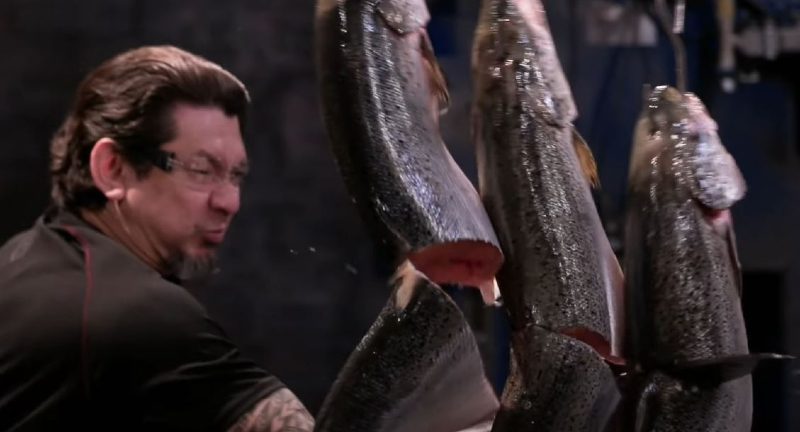
The Falcata sword has all the characteristics and looks to be used as a sword, axe, and machete. It is straight enough at the edge of the blade to be used for thrusting, it is just curved enough to be used as an axe, and the entire blade shape gives it a machete-like ability. The Falcata is very good in both thrusting and slashing strikes.
It is a very small shortsword that allows it to be used only at very close distances. Because of its small size, it is primarily used as a one-handed sword. The ancient Iberians used it combined with a shield and proved very effective in both large and small-scale battles.
Martial Arts & LARP
Sadly, the fighting styles of the Falcata have been forgotten throughout the course of history. By today’s standards, there are still some people that practice the art of the curved Falcata, but there aren’t any schools that we know of that practice ancient weaponry, especially Iberian.
Although that’s the case, in LARP it is a whole different story. Whenever there is an ancient LARP match up and about, maybe 30-40% of the contenders will have a Falcata. It is beloved in reenactments because of its unique and beautiful traits that are not just to look at, but to also use.
Is it a Beginner Sword?
There are many stainless steel battle ready Falcatas available to find online. Although that is the case, if you are a beginner sword user and enthusiast, we highly advise you to not get the Falcata first. It is curved and has a grip that is very hard to get used to.
Instead, we recommend maybe going for the Gladius if you are a starter for ancient swords. Straight swords with simple handles will be much better for a beginner instead of the curved and forwarded blade of this ancient Spanish sword.
History
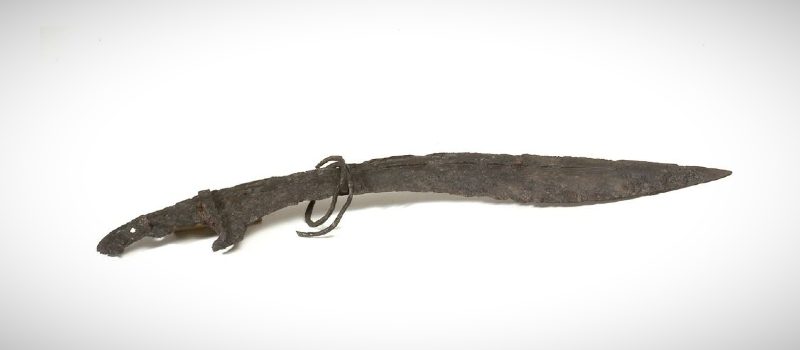
The Falcata sword is an ancient sword mostly found and used on the Iberian peninsula. It is a weapon that was used even in pre-roman times and would highly influence the later weaponry of the Romans.
This type of sword was used for hundreds of years in the ancient world as a weapon for both foot soldiers and horse soldiers. It was known for being able to cut through a lot of things. Due to the poor quality of armor at the time, the Romans knew that if a Falcata hit hard enough from a horse, it could even break a helmet.
The quality of the Falcata made the Romans upgrade their armor and change their weapon’s shape and form. It is believed that the main reason why Hannibal had so much success in the Punic wars and especially in the battle of Cannae, was mostly because of the usage of the Iberian Falcata.
It is definitely one of the ancient blades that shaped history.
Origins
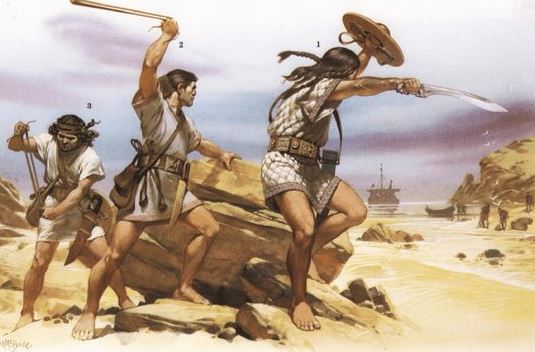
The Falcata is an Iberian sword that was developed and produced right after iron started being used in western Europe. There are some historians that disagree about its origins. Let’s take a look at them.
Celts and Celtiberians
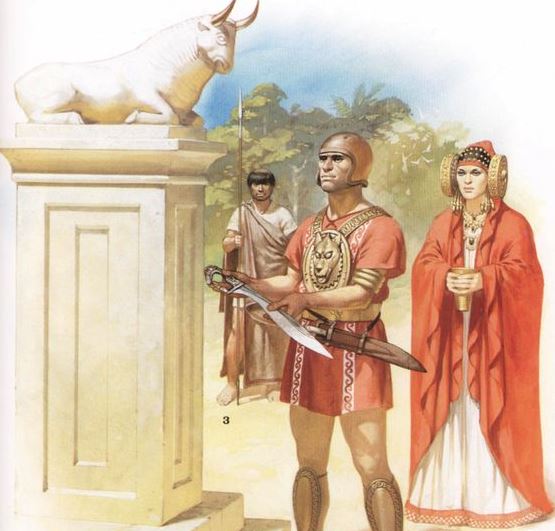
There is a theory that the Falcata sword is a very old type of Celtic sword. When the first Iron was introduced and developed on the Iberian Peninsula by the Celtiberians, the Falcata was being produced and made.
There are many types of these swords found in the Celtic ancient tombs that might support this theory too.
Iron Age Knife
Some could claim that this is a very basic sword that started from the normal sickle. When Iron was being introduced to Iberia, people that lived here that used normal slashing everyday tools simply made a short weapon tool.
With time this iron age knife, which was highly used in rituals and ceremonies, would prove to be used in battles and eventually evolve to be the Falcata Iberian sword that would terrify Romans and other ancient peoples alike.
Greece
There are some historians that argue that those two other origin sources are completely false and claim that the Falcata was actually brought to the Iberian peninsula by Greek merchants and traders. This means that the Falcata is basically a form or even copy of the Greek Kopis.
Also, there are some that might say because of the effectiveness of the Kopis and its shape, the Iberians started producing this type of sword too.
Terminology
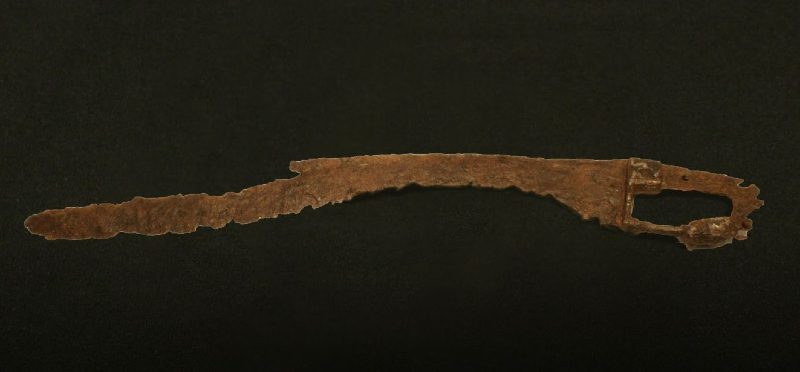
The real name for the Falcata sword used by the first users in the Iberian peninsula has been unfortunately lost.
The name Falcata that this sword has is actually very recent. Usually, it is found in historical ancient texts simply as the Iberian sword, or even sometimes called all sorts of Greek names. Sometimes it can be even called a Roman sword too.
The term Falcata actually means sickle-shaped and comes from the 19th century. This is when a lot of the Iberian ancient history was being researched and this sword was found by the abundance.
The Romans called both the Falcata and Kopis Machaira swords.
How is the Falcata different from Kopis and Kukri?
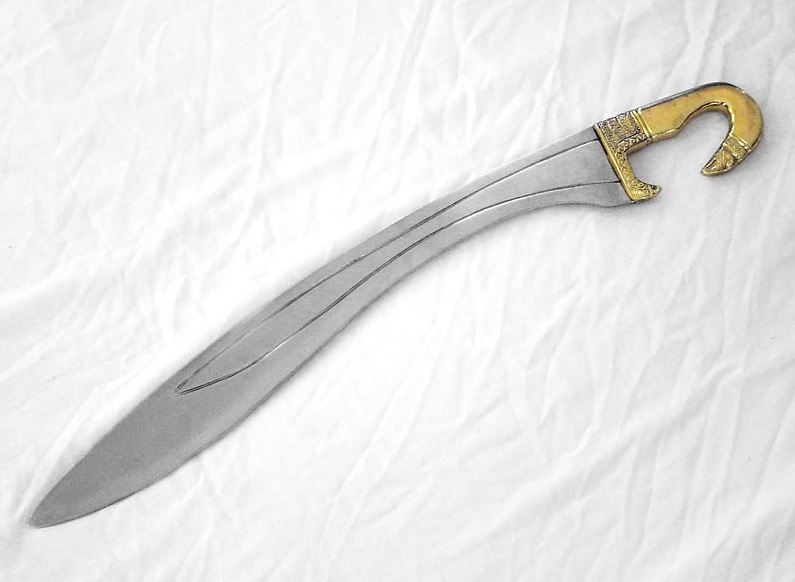
You might notice that the Falcata sword resembles and looks alike the Kukri and the Kopis. That is why when you might be looking for a Falcata online you might instead get one of those types of swords.
The biggest thing to look for is the handle and the blade shape. The Falcata has a very curved handle with a hook as its pommel. Also, it does have a very small guard that has a hook on its own.
The Kopis is mostly more straight in the handle and the blade too. It will be slightly curved along the back edge and may have a rip or a ridge, whereas the Falcata will have more fullers. Also, the Kopis has a single cutting edge and the Falcata is double edged.
The Kukri on the other hand is much easier to make a distinction from. It will be way shorter and look almost as if it is a knife. Also, the Kukri does not have the same handle.
Conclusion
The Falcata sword can be placed as one of the most important ancient swords that impacted the course of history. It influenced and made the Romans improve their tactics and armor which then could have been their reason for the conquest that they did.
